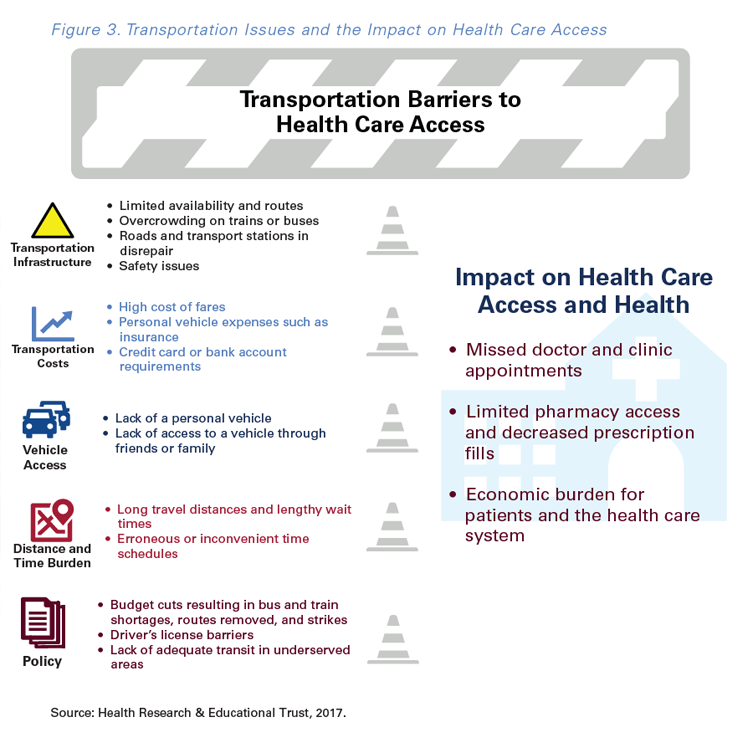Article 25 of the United Nations’ 1948 Universal Declaration of Human Rights states that “Everyone has the right to a standard of living adequate for the health and well-being of {themselves} and {their} family“.
The importance of NEMT to healthcare
Ensuring one’s health and well-being includes being able to get to and from healthcare-related appointments, to receive proper (and sometimes, live-saving) care. For this reason, individuals require easy and affordable access to non-emergency medical transportation (NEMT). But that’s not always as simple as it sounds, when you consider the many obstacles, people face daily.
Let’s look at the TOP 5 transportation barriers to healthcare access:
1. Transportation Infrastructure
- Limited availability and routes
- Overcrowding on trains or buses
- Roads and transport stations in disrepair
- Safety issues
2. Transportation Costs
- High cost of fares
- Personal vehicle expenses (i.e. insurance, gas, maintenance)
- Credit card or bank requirements
3. Vehicle Access
- Lack of personal vehicle
- Lack of access to a vehicle through friends or family
4. Distance and Time Burden
- Long travel distances and lengthy wait times
- Inconvenient or erroneous time schedules
5. Policy
- Budget cuts resulting in bus and train shortages, routes removed and strikes
- Driver’s license barriers
- Lack of adequate transit in underserved areas
Unhealthy impacts
Barriers to transportation access impact all parts of an individual’s health care, including missed or delayed doctor and clinic appointments, limited pharmacy access and decreased prescription refills. Transportation barriers also cause an economic burden for patients and the health care system. And overall, they result in poorer health outcomes.
There is some good news, however. These significant impacts are finally being noticed and addressed by those in healthcare who can affect critical and positive change. At Momentm, we are doing our bit and are committed to making it efficient and effective for brokers, MCO’s, PACE centers and medical transportation providers by evolving our non-emergency medical transportation software.
Breaking Barriers
With the growing recognition that improving transportation access and support for patients can help improve health outcomes and lower health costs, hospitals and health systems are now (finally) focusing on transportation as part of their care delivery efforts.
The American Hospital Association publishes a Social Determinants of Health Series. One series, featuring a study on Transportation and the Role of Hospitals, outlines strategic approaches that hospitals can use to build a healthier community that addresses the physical, behavioral and socio-economic needs of individuals and families and improves population health.
Specifically addressing transportation as a major social determinant is important for achieving greater health equity. Hospitals and health systems are addressing patients’ transportation needs through a variety of strategies, including:
- Understanding and assessing the impact of transportation on public health
- Supporting policy and infrastructure programs aimed to improve transportation access and to create safer, healthier transportation options
- Investing in resources to understand patients’ transportation needs
- Providing mobile clinics or direct transportation services through community partnerships or programs
- Using technology, such as providing telehealth options, to reduce travel time for patients
By making the commitment to address transportation barriers and building partnerships with community organizations and other entities, hospitals and health systems can improve transportation and health care access for patients and families and create more equitable, healthier communities.
